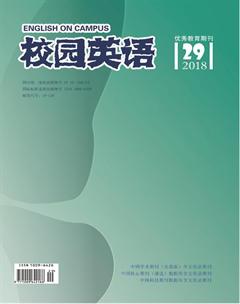AComparativeStudyofCommunicativeLanguageTeaching(CLT)andTask—BasedLanguageTeaching(TBLT)
【Abstract】Communicative Language Teaching and Task-Based Language Teaching are two important methods in the language teaching. At first, this paper provides the definition of two different teaching methods. At the same time, it illustrates the similarities and differences of CLT and TBLT. We hope that the paper is conducive to make teachers use the two teaching methods in practical teaching. In addition, at the end of the paper, it mainly analyzes that which one is authors preference and reasons of preference.
【Key words】CLT; TBLT; Comparison
【作者簡介】李宁宁(1992.05.05- ),女,汉族,河北文安人,现就读于天津工业大学外国语学院2016级外国语言学及应用语言学,主要研究方向:外语教学。
I. Introduction
In 1980s, CLT was introduced to China. The goal of CLT is to foster learners communicative competence.
But since CLT and TBLT are both popular in present China and a lot of English teachers have vague comprehension of the two teaching methods as well, it is very necessary to compare the similarities and differences between CLT and TBLT. It is conducive to help teacher comprehend the meaning of the two methods so that they can use the two methods better in practical teaching.
II. The definition of CLT and TBLT
One frequently cited dimension of CLT, its learner-centered and experience-based view of second language teaching, also has antecedents outside the language teaching tradition per se. TBLT refers to an approach based on the use of tasks as the core unit of planning and instruction in language teaching.
III. Comparison of CLT and TBLT
3.1 Similarities
Firstly, for the learner roles and teacher roles, students are the center of the classroom in CLT and TBLT classroom. The teachers role in CLT and TBLT is similar. The teachers is a facilitator, a organizer, a designer and an advisor. Secondly, both CLT and TBLT classroom adopt authentic material and authentic context.Finally, there are some concerns in implementing CLT and TBLT in China. The first one concern is ‘class-room management, the second is ‘avoidance of English , and the third one is ‘incompatibility with public assessment demands.
3.2 Differences
Firstly, in terms of concept, CLT is a broad philosophical approach, however, TBLT is a branch of CLT. CLT is best defined as an approach rather than a method. In contrast, TBLT is a method. Although The TBLT is a kind of teaching method under the framework of CLT,it isnt a replacement of CLT, is a development of CLT. Secondly, the teaching process is different between CLT and TBLT. W. Littlewood classified the communicative activities into two categories: pre-communicative activities and communicative activities. TBLT includes the pre-task phase; the task cycle phase; the post-task phase. Lastly, the focus of CLT is the language used or communication in the activities, but the focus of TBLT is the use of task. The emphasis in CLT are on the process of communication. However, the focus of the TBLT is the design of task.
IV. Which one is My Preference
In my point of view, I prefer TBLT to CLT. There are three reasons in the following. Firstly, there are a variety of tasks in TBLT classroom. These tasks contribute to arouse interests of learners. Secondly, in the process of completing tasks, learners should combine language knowledge with language skills. It is conducive to develop their comprehensive language abilities. Finally, in the process of TBLT, every students has opportunities to think independently and to participate actively in the tasks. It is easy to make learners maintain learning enthusiasm, and develop good study habits.So I consider that TBLT is a good way to mobilize classroom atmosphere. It is also a practical way to use in the language teaching in China.
V. Conclusion
In sum, CLT and TBLT have influenced English language teaching worldwide. The paper illustrates the definition of CLT and TBLT and their similarities and differences. At the end of the paper. I explain the reasons that I prefer to TBLT. The purpose of the paper is to make teachers further know about clearly the meaning of CLT and TBLT so that teachers can make a choice on using the teaching methods in practical teaching.
References:
[1]Brown,D.(2001).Teaching by principles:An interactive approach to language pedagogy(2nd ed).California:San Francisco State University.

